Semantic Competitor Gap Analysis
Semantic Competitor Gap Analysis.
URL: https://flightdeck.resolutiondigital.com.au/semantic/home
Objectives of the Tool
- Get a clear view by Services of Strengths, Weakness from a competitive landscape for Brand vs relevant competitors
- Identify Creation Opportunities: a. New Content from Missing Topics b. Content Refreshment from Missing Keywords
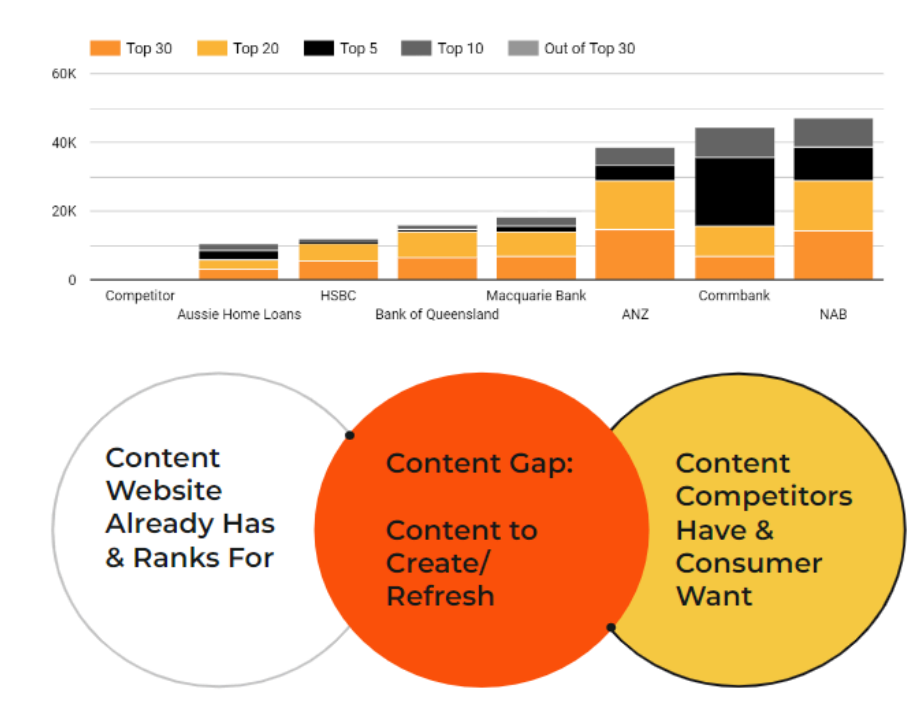
What is Semantic Content Clustering?
Semantic keyword clustering automatically organizes related keywords into clusters based on their meaning and context.
This helps:
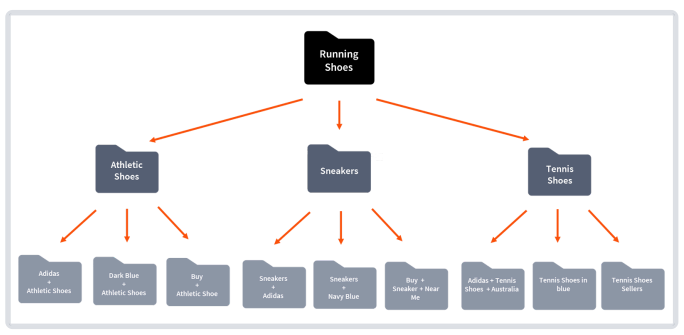
- Streamline Keyword research
- Better understand competitive landscape
- Provide more accurate content optimization recommendations
- Enable more effective targeting of potential customers.
- To be more strategic with page creation as a single piece can now potentially rank for more keywords without needing more link juice.
Using FlightDeck for Semantic Competitor Gap Analysis.
Features of Semantic Competitor Gap Analysis(in FlightDeck):

- Project Creation: Includes a Client data along with at most 10 Competitors
- Step 1: Keyword Clustering
- Step 2: Meta Data for the URLs present in Client and Competitors
- Step 3: Filter Creation for Dashboard
- Step 4: Performance Dashboard
- Step 5: Content Ideation Creation portal
- Step 6: Content Ideation Report
1. Project Creation:
Identify Competitor & Gather Ranking Data
- Identify Relevant Competitors after speaking with client.
- Refine list based on Ranking Competitors
- Leverage SEMRush and FD data to gather relevant ranking data on all competitors.
- Clean data to remove branded keywords, redundant generic keywords, non relevant keywords etc.
Steps to follow:
| 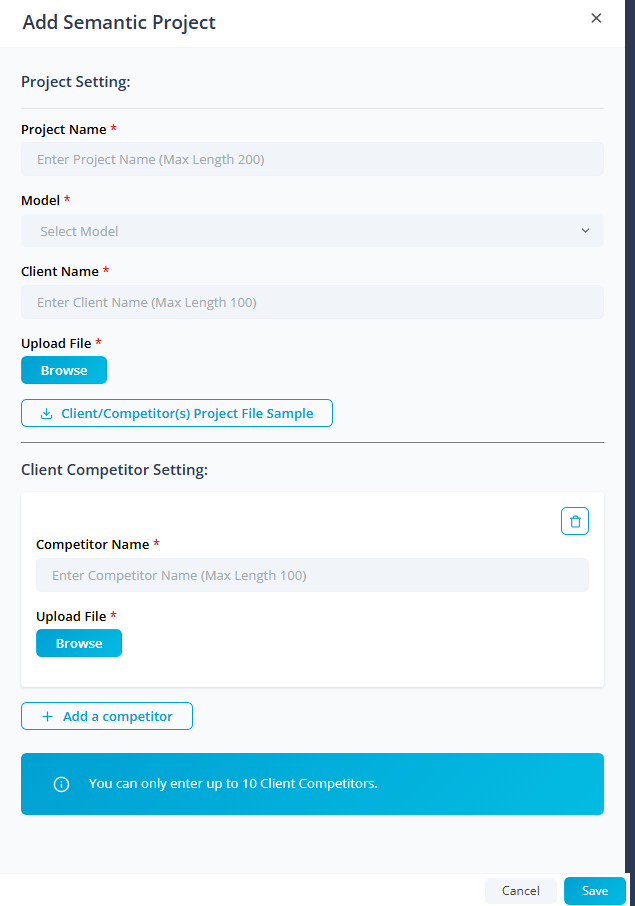 |
|
After, saving the settings are uploading the required documents; the project will be marked as In progress. The project will be queued for keyword clustering process.
2. Step 1: Keyword Clustering
The Project should be on Keyword and Cluster stage. For the project to be in Keyword and Cluster stage might take some depending upon the pending items in the queue and size of the keywords present in project files for client and competitor. |
Cluster All Keyword Based on Semantic Relevance
|

The keywords present in the project files (for client and competitors) are listed here. The Keywords are grouped into the respective clusters.
- Also, any keywords which was missed earlier during uploads or missed from the project files can be manually added in this stage.
Steps to follow in order to insert new keywords in existing list:
| 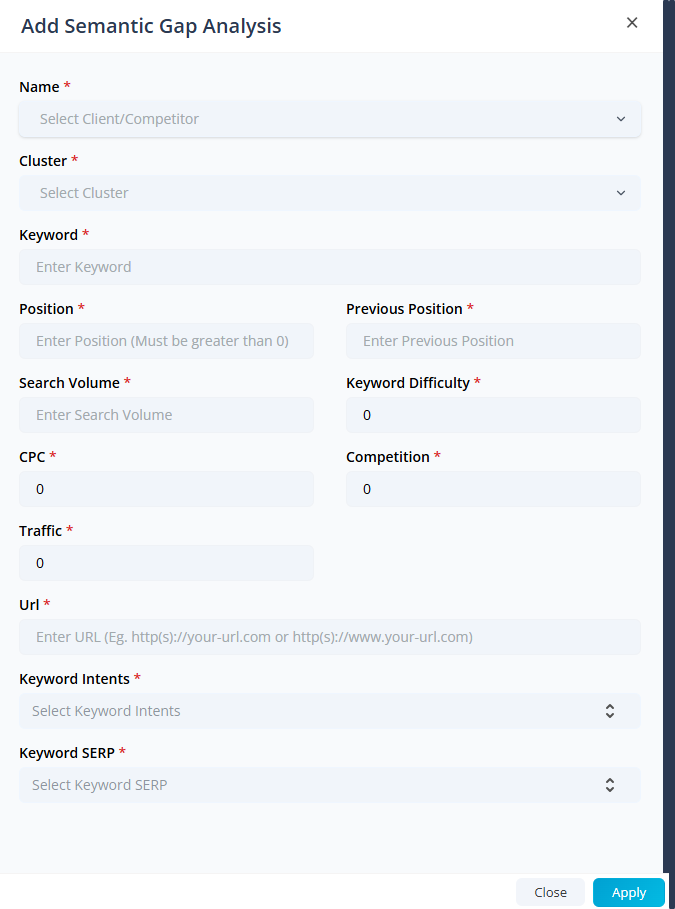 |
Clicking on Continue button will progress the Project for the next stage. Data Collection from Screaming Frog service will take some time.
And, the Project is marked in as In Progress - Meta Data stage until the queue is completed.
3. Step 2: Meta Data
The Project should be on Meta Data Stage. For the project to be on this stage the queue for extracting meta data information from Screaming frog service needs to be completed; which might take some time to complete. |
Combine KWR with Topline On Page Research
| Closest Matching Own Page Elements
|

- In this stage; Title, Meta Description, H1, H2, Response Code is added to the keyword list.
- Some URLs might be redirected to different URLs so the meta data might not be present. The URLs with status codes 301, 302, 403, 500, etc. don't have the Meta Data and are categorized as “Inaccessible URL“ in UI.

Now, Clicking on Continue button to progress to Step 3. No, waiting time is required to progress from Step 2 to Step 3.
4. Step 3: Create Filter
| The project should be on Filter stage. |
The Filters which are required in Performance dashboard can be created in this stage.
At most two filter groups can be marked as Primary.(Primary Filter Groups are those filter groups which are displayed upfront in performance dashboard or Step 4 of the project) User is able to create more than one filter groups which might be required for Performance dashboard. |
Steps to follow to create Filter groups and Filters:
1. In Step 3 of the Project, click on Add Group button.

2. Click on Add ( + ) button to add filter in the group.

- The filter items can be: Cluster Name, Keyword, Search Volume, URL.
- The filter operators depends upon the filter item, if the filter items are string: Cluster Name, Keyword, URL; then the operator is going to be Contains and if the filter items are numeric: Search Volume; then the operators are going to be Equals, Greater or equals to, Greater than, Lesser than, Less than or equals to.
|
At lease One filter Group is required to progress to Step 4: Performance Dashboard.
Clicking on Continue button will progress the Project to Performance Dashboard.
5. Step 4: Performance Dashboard
| The Project should be in Performance Dashboard stage. |

Select the view you want to use
|   |
The Filters Group which are Primary are displayed upfront in the Performance Dashboard as below.
Deep Diving Even More:
Select the Appropriate Tab View
PRO TIP: Use Control + Selection | 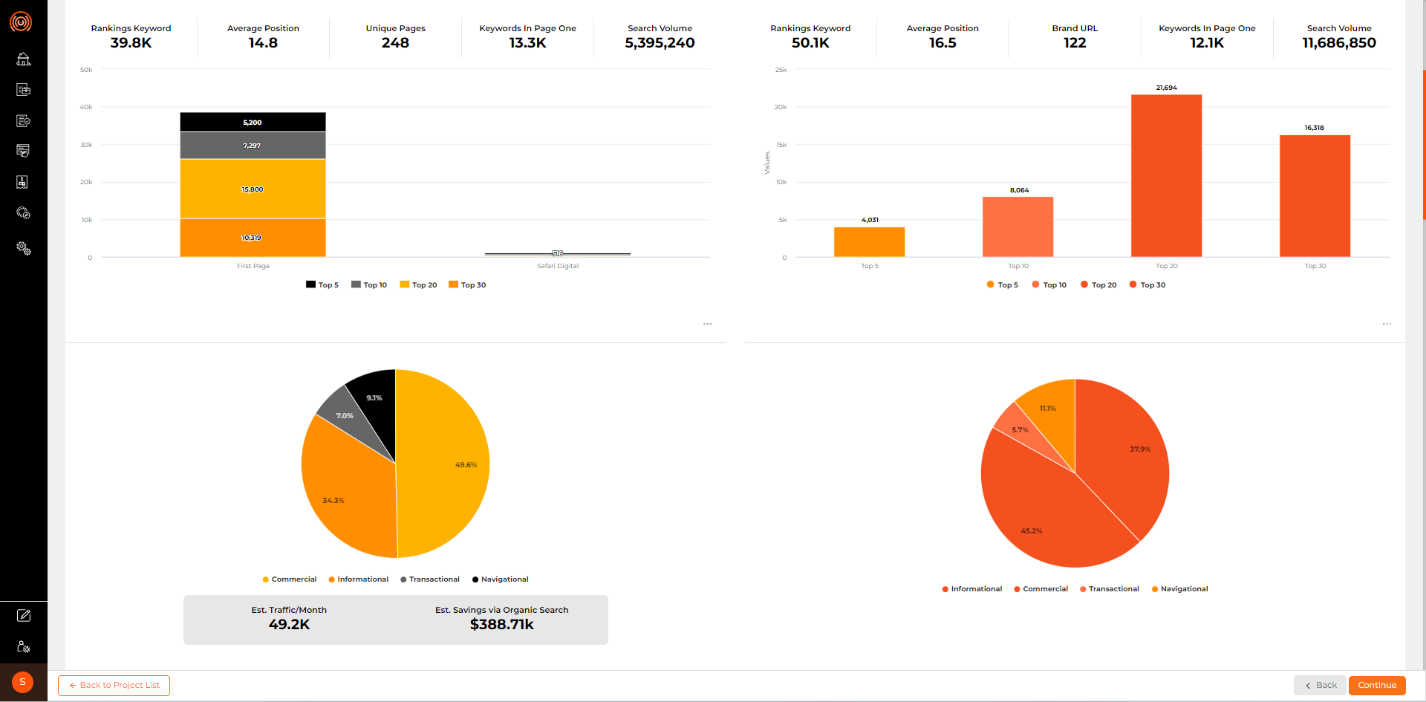 |
Select the Appropriate Cluster to view.
| 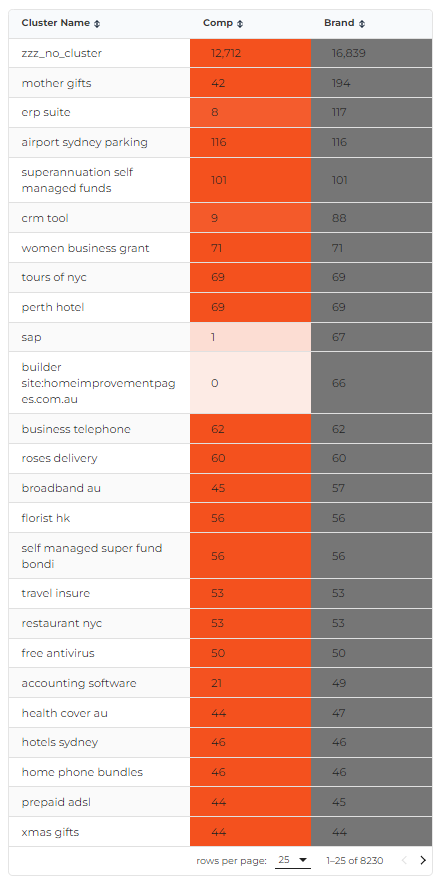 |
Compare Keyword Performance
| 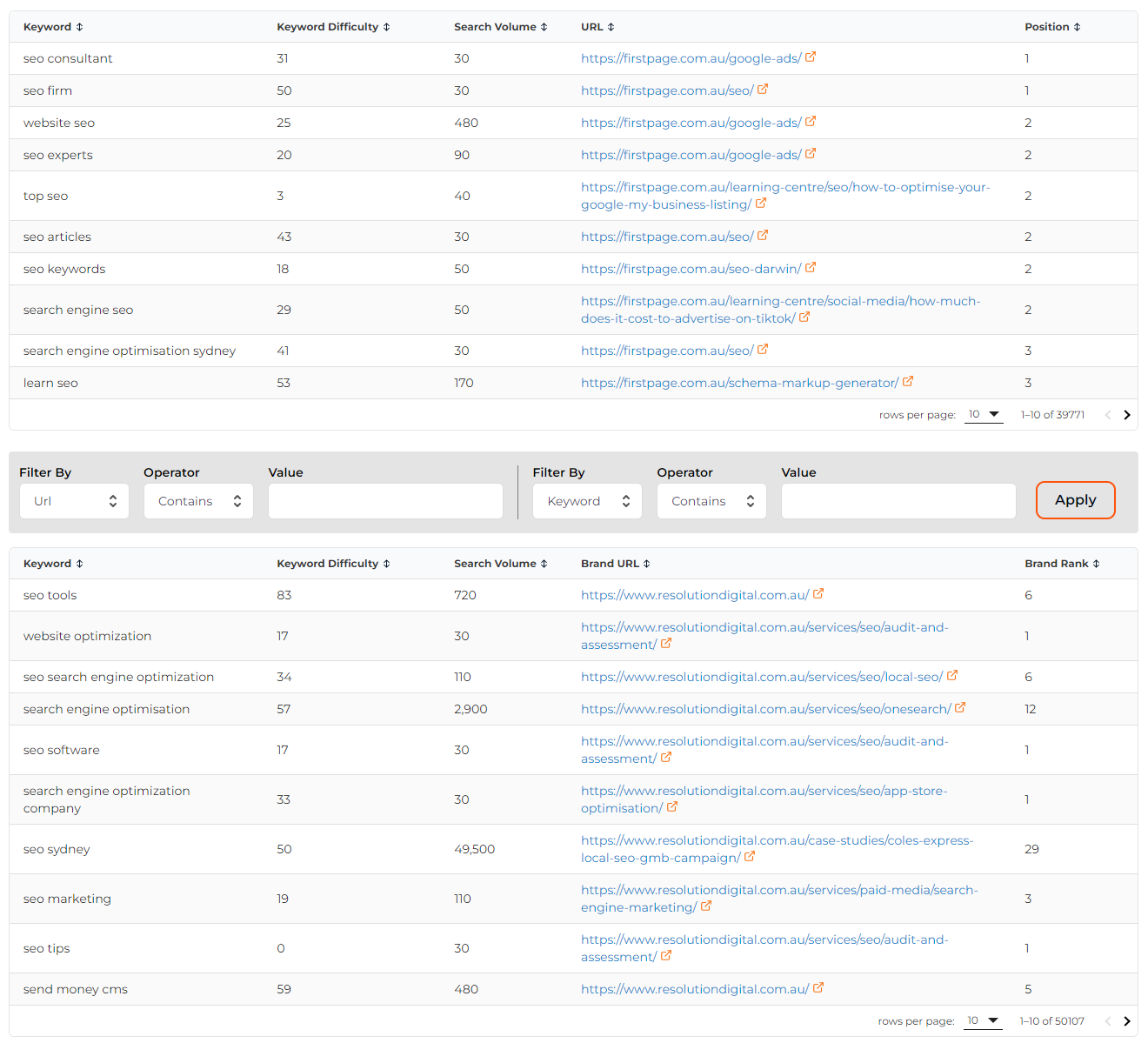 |
All the competitors added into the projects are listed in Select Competitors drop down.
- The Short tail vs Long Tail Filter is based on
WHEN Keyword Length = 1 THEN "1 word"
WHEN Keyword Length = 2 THEN "2 words"
WHEN Keyword Length = 3 THEN "3 words"
WHEN Keyword Length = 4 THEN "4 words"
WHEN Keyword Length = 5 THEN "5 words"
WHEN Keyword Length = 6 THEN "6 words"
WHEN Keyword Length = 7 THEN "7 words"
WHEN Keyword Length = 8 THEN "8 words"
ELSE "8+ words" - Search Volume filter is based on
WHEN Search Volume < 10 THEN 'Very Low'
WHEN Search Volume >= 10 AND Search Volume < 50 THEN 'Low'
WHEN Search Volume >= 50 AND Search Volume < 100 THEN 'Moderate Low'
WHEN Search Volume >= 100 AND Search Volume < 500 THEN 'Moderate'
WHEN Search Volume >= 500 AND Search Volume < 1000 THEN 'Moderate High'
WHEN Search Volume >= 1000 AND Search Volume < 5000 THEN 'High'
ELSE 'Very High' - Clicking on Charts, Charts Legends, Table Grid Items (like Keyword Difficulty, Search Volume, Position, etc) will apply the filters and charts are populated accordingly.
Clicking on “Continue“ buttons will progress the project to next stage i.e. “Content Ideation“.
6. Step 5: Content Ideation
The Project should be in Content Ideation stage. No queues are involved in this stage. |
Steps to follow to create Content Ideation report using Existing Keyword:
|  |
Steps to follow to create Content Ideation report using Custom Keyword:
|
|   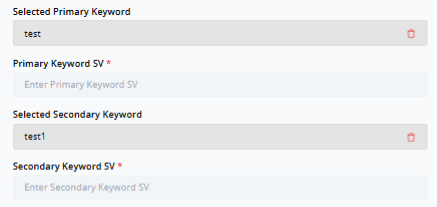 |
| At least one Content Ideation is required to continue to next step. |
Now, Click on Continue Button to progress to Content Ideation Report stage.
7. Step 6: Content Ideation Report
| The project should be in Content Ideation Report stage. |

The Content Ideation has its own set of Filter Components:
- The Primary SV and Cluster SV depends upon the Primary Keyword Selected during each Content Ideation Project
- Primary SV slider’s maximum value depends upon the Maximum Search Volume of the selected Primary Keywords from each of the Content Ideations
- Cluster SV depends upon the maximum value of Search Volume entered by user in “Approx Category SV“ entered for each Content Ideation
- The First Content Ideation project is selected by default in Content Ideation Report page.
In order to Export the Content Ideation project user needs to select the Content Ideation and Click on “Export Selected“ button.
| 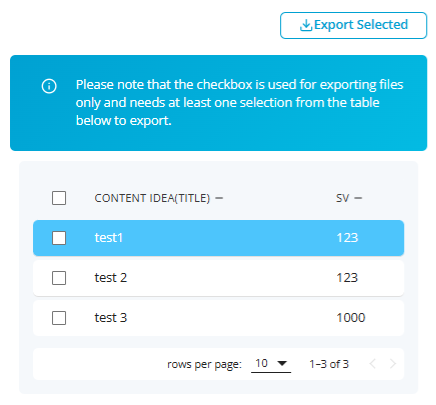 |
|




